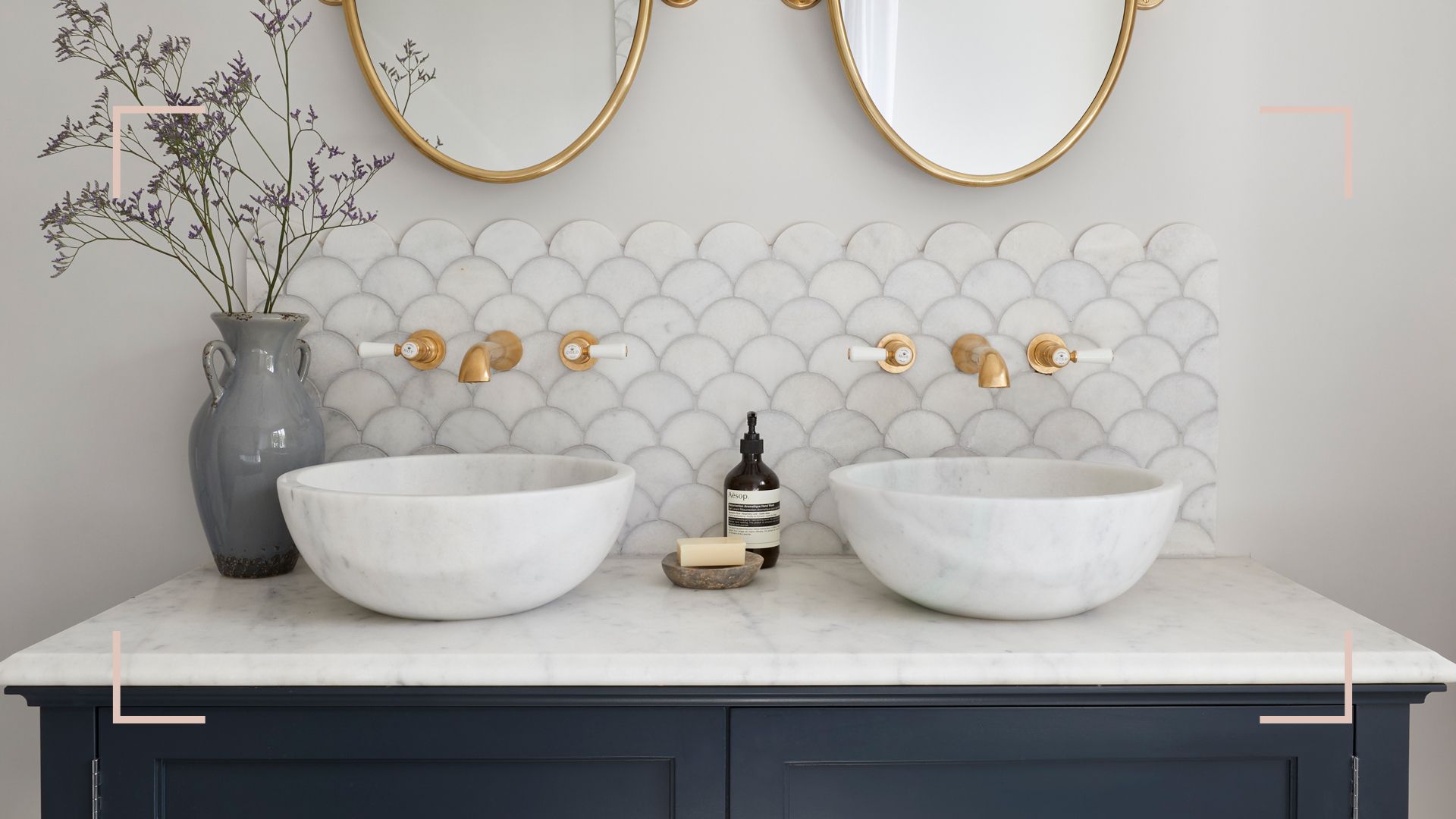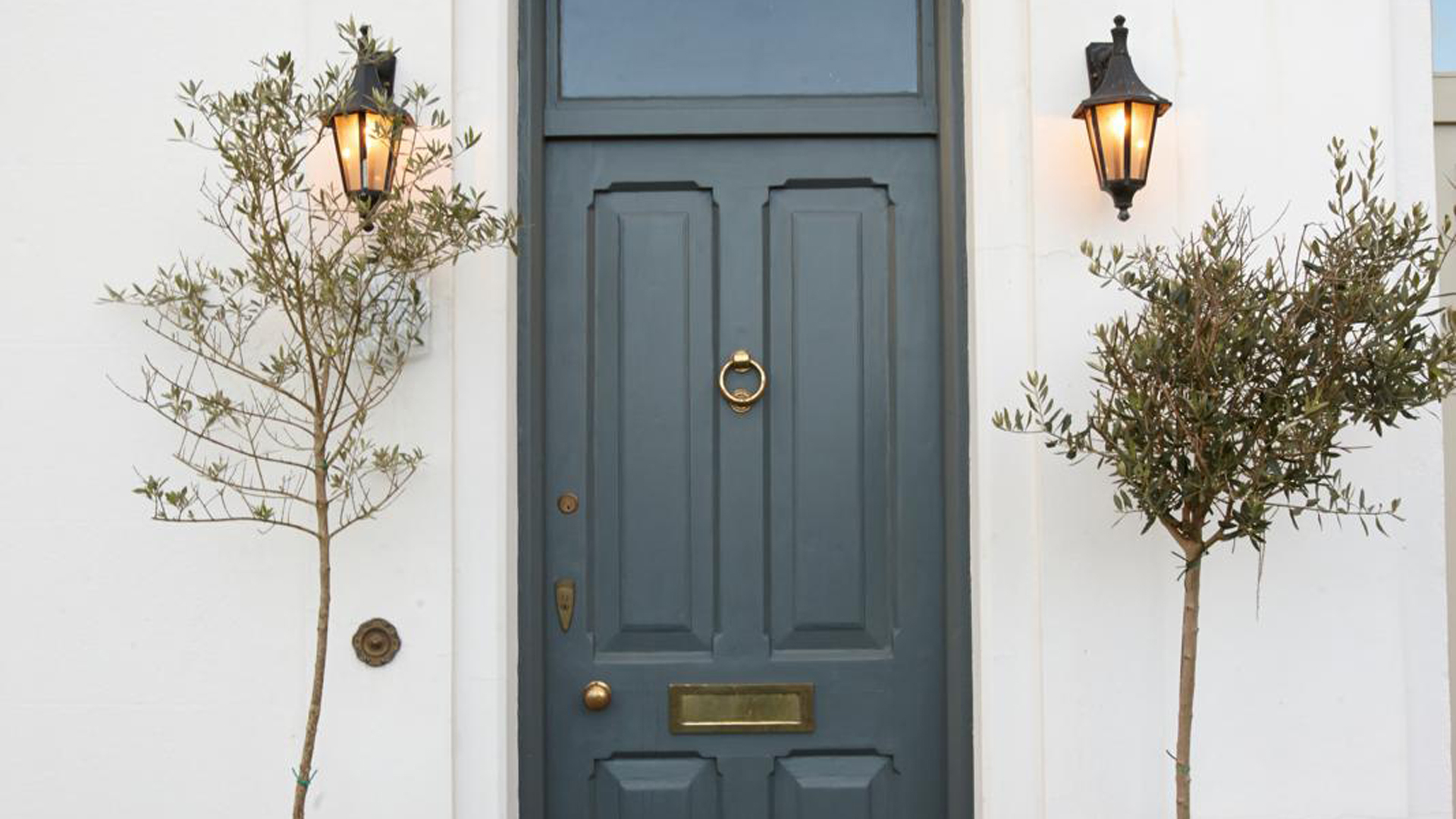How to clean brass – expert tips for a polished look
Knowing how to clean brass properly restores shine without scratching or damaging surfaces, both lacquered and unlacquered


Tamara Kelly
Mastering how to clean brass properly prevents tarnishing or discoloration. it's also crucial to know the most efficient way to clean all finishes to keep them looking their best.
From shiny new brass to aged antiqued brass, this alloy metal's versatility makes it ideal to complement all decors. However the trick is keeping it looking the way it was designed. Just like other metals in your home, improper cleaning of brass could ruin the original state of the material and therefore its desired look. So just like how to clean stainless steel, you need to know how to clean brass properly too before you embark on your latest cleaning checklist.
Fortunately, there are a number of effective ways to clean brass, whether lacquered or unlacquered, to keep it looking its best. Plus, many of the best ways to clean brass involve only natural ingredients that you most likely already have in your kitchen cupboards.

How can you tell if something is brass?
Brass is a copper and zinc alloy material. It looks fantastic in our homes but is a material that will corrode over time and develop an iridescent rainbow patina on its surface if not cleaned sufficiently. But all things that look brass are not necessarily brass, so how do you find out?
“The way to know whether or not something is fully brass is simple," says Barrie Cutchie, Design Director at BC Designs. “Place a magnet on it, If it doesn’t stick, it’s brass. If it does stick, it’s only brass-plated."
Before you start cleaning the brass you need to know what type of brass it is, and whether it has an unlacquered or lacquered brass-plated finish. "Polishing isn’t necessary on objects that are only brass-plated, and, in fact, it could actually scratch the plating off," Barrie warns. "That’s why it’s important to identify whether or not the brass is just a plating before you embark on any brass cleaning project."
How to clean brass: the different cleaning methods
Once you've checked which type of brass you're cleaning you should choose the best method to suit because the different types of brass all require a different approach whether it is solid antique brass or brass-plated alternatives.
Sign up to our free daily email for the latest royal and entertainment news, interesting opinion, expert advice on styling and beauty trends, and no-nonsense guides to the health and wellness questions you want answered.
For cleaning brass, there are a few different options depending on what you have to hand at home. All of the below methods will work brilliantly for sprucing up your brass appliances or home fixtures, so choose which one is most convenient for you, and get cleaning.
1. Clean brass with soapy water and a cloth
All brass finishes, lacquered or unlacquered, can be given a gentle clean by way of wiping the surface down with a soft cleaning cloth and a small amount of soapy water. “Clean with warm water or warm water combined with a mild pH-neutral liquid soap and then polish with a clean, soft, lint-free cloth. Microfibre cloth is ideal as it is gentle but effective for cleaning without scratching and needs only to be dampened with water to clean the product,” explains Emma Joyce, Brand Manager at Perrin & Rowe.
This can be done daily for areas around the home that require it, such as in kitchens and bathrooms, where brass fittings are exposed to elements of potential tarnish.
"General day-to-day cleaning can be done with a weak soapy water solution and a clean microfibre cloth," advises Barrie. "This works on brass and brushed brass."
“One of the best pieces of advice we can give is to keep on top of cleaning your brass, especially taps,” advises Barrie, "because it is much easier to do this than once soap build-up or limescale has started to set in. Make sure you get the handle and around the base, but don’t rub too hard. Rinse with clean water and dry with a dry cloth."
2. Use a specialist polish to clean antique brass
Antique brass has a beautifully aged patina that gives the material its charm, meaning it needs to be cleaned with care to avoid stripping away the character.
"If the brass is unlacquered it will patina and age in time with the correct care and maintenance," says Lee Lovett, found of The Soho Lighting Company. "To remove any discoloration to the finish, use a polish that is specifically designed for brass. Refer to the instructions for the correct application and apply it using a soft cleaning cloth. Use in conjunction with warm water, using the soft, damp cloth to remove any debris, dirt, and dust.”
"Of course, if you prefer you can let the brass age naturally without any interference. By forgoing the polishing, it can allow the fixture to become wonderfully tarnished, sometimes polishing could restore it to a new-like state which defeats the object of letting it age in the first place."
"If the object is just brass-plated, all you actually need to clean it is warm water and soap," warns Barrie. You should avoid strong cleaners or scrubbing brass-plated items because you could scratch the plating off. “The purpose of lacquer is to prevent tarnishing and it can be polished regularly by using a soft cleaning cloth to remove any stains or fingerprints easily," suggests Lee.
3. Clean brass with vinegar and salt
Cleaning with vinegar is one of the most common methods used to clean and restore brass. If your brass has tough stains that need removing, then you'll need the abrasive power of salt. A white vinegar and salt scrub will do the trick and works similarly to the acid dips that are used to clean metals for manufacturing.
In order to figure out how to clean brass with vinegar, simply combine 1/2 cup vinegar with 1 teaspoon of semi-coarse, table salt (not fine salt and not coarse salt). Mix in a medium sized-bowl with enough all-purpose flour to thicken. Stir the mixture completely to dissolve the salt. If the mixture is too thin, simply add more flour to create a paste.
Rub the paste onto your brass objects and allow to sit for 10-15 minutes. If needed, use an old, wet toothbrush or a cotton rag to scrub stubborn portions of grime.
Afterward, rinse all cleaning solutions away and wipe completely dry to rediscover the shine and beauty of your brass implements.

4. Clean brass with lemon and baking soda
If you don't wish to use vinegar, you can use lemon juice as a substitute acid and the sodium in baking soda to create a homemade brass cleaning paste. This is a powerful duo to accomplish a sparkly clean brass finish with little elbow grease.
Squeeze the juice of a lemon into a bowl and add 1 teaspoon of baking soda. Mix well to create a paste. Rub the mixture onto your brass items and let sit until dry. Buff away the dirt and grime with a clean wet cloth, making sure you leave no leftover residue behind.
This natural solution is a great way to clean items that must remain in place while cleaning. This includes doorknobs, lamp bases, and door knockers. Always unplug electrical appliances before cleaning. Baking soda is also a great option for cleaning other metals around your home, including cleaning a stainless steel sink and how to clean copper.
5. Try toothpaste for an alternative polish
An inexpensive, plain white toothpaste has plenty of scrubbing power to clean and polish real brass fixtures. Avoid gel toothpaste or those with artificial flavorings to eliminate the chance of a bad chemical reaction.
Simply apply a thin layer of toothpaste to your brass objects and let them rest for a few minutes. Next, take a soft clean cloth like microfiber or cotton and polish it away. Tougher spots may demand a little more force and the addition of extra toothpaste.
Toothpaste is an excellent way to remove the tarnished patina on brass that is caused by oxidation. The process of oxidation is common for brass items that are exposed to water. It is easily identified by a blackish, green, or blue patina and will sometimes harden into a thick crust over the surface of the brass.
6. Use tomato sauce, tomato juice, or ketchup
For a quick cleaning solution, simply rub a tomato-based sauce onto your brass items or let them soak in a bowl of tomato juice. These tomato products provide a mild acid cleaning that must be rinsed completely off after 5 minutes. If the items are really dirty, you can let them soak longer.
Use warm water and a soft cloth to restore the bright shine of the original brass. When cleaning brass, avoid using highly abrasive cloths, steel wool, or metal bristles that can leave unsightly scratches on the surface of your beautiful brass objects.

What is the best homemade cleaner for brass?
To clean patinated brass without a lacquer you can try a natural homemade cleaner.
"An old-fashioned and cost-effective method is mixing equal quantities of salt, flour (or baking soda), and vinegar together and leaving it on the patinated brass for an hour," advises Lee. "You then simply wipe off and it is as good as new."
"Or if you’re in a hurry, mix half a lemon with a teaspoon of baking soda and rub with a cloth in a circular motion, then rinse off."
“To remove limescale from brass taps we advise a 50/50 solution of lemon juice and water," advises Emma. This is a common solution for descaling a kettle too.
"To avoid it running away, apply some cotton wool and wrap it around the area. Leave on for no more than an hour then remove cotton wool and rinse and dry fully with a lint-free cloth. For heavy scaling, the process can be repeated as long as the area is rinsed off in-between treatments to avoid a build-up of the citric acid.”
How do you clean badly tarnished brass?
If you wish to remove the tarnished appearance of your brass there are a number of different cleaning options, natural and otherwise. “Tarnish is an issue that happens to many types of metal, including brass. This can make it look dirty with a black, gray, or light surface, however, all types of tarnish are easy to deal with in most cases," explains Leigh Start, operations director at The Metal Store.
“There are many types of metal cleaners available commercially that remove tarnish," explains Leigh "If you opt for one of these then always use a very small amount and work it into the metal with a soft cloth. Try to avoid stiff brushes or abrasive cloths to avoid scratches"
“Alternatively, you can use your own DIY recipe of baking powder, diluted vinegar, or lemon, which is just as strong as an ordinary metal cleaner."
Elaborating on how to use a natural remedy to clean badly tarnished brass, Barrie suggests, "combine the juice of half a lemon with a teaspoon of baking soda and stir until it becomes a paste. Apply the paste with a soft cloth. If the tarnish is heavy, let the piece sit with the paste on it for 30 minutes. Rinse with warm water and dry. It might be that you need to repeat the process a couple of times if the brass is badly tarnished ."
What not to do when cleaning brass
“Avoid getting household bleach or cleaners onto your brass fittings when using on surrounding surfaces," warns Emma, speaking primarily about cleaning bathrooms and cleaning kitchens with brass fixtures and fittings. "Any splashes should be immediately rinsed with clean water and dried and should not be allowed to remain on the metal finishes. To avoid this happening, cover the fixture with a cloth or towel when cleaning tiles, mirrors, countertops, etc."
Know when not to clean it yourself. If your brass has a shiny, lacquered finish to prevent it from aging or tarnishing, then you should not try cleaning it yourself an important part of planning how to clean brass. Lacquered brass surfaces can be easily wiped down, but you should not clean or polish these items in the same manner as unlacquered or live brass.
Amy Hunt is an experienced digital journalist specialising in homes, interiors and hobbies. She began her career working as the features assistant at woman&home magazine, before moving over to the digital side of the brand where she eventually became the Lifestyle Editor up until January 2022. Amy won the Digital Journalist of the Year award at the AOP Awards in 2019 for her work on womanandhome.com.
- Tamara KellyLifestyle Editor
